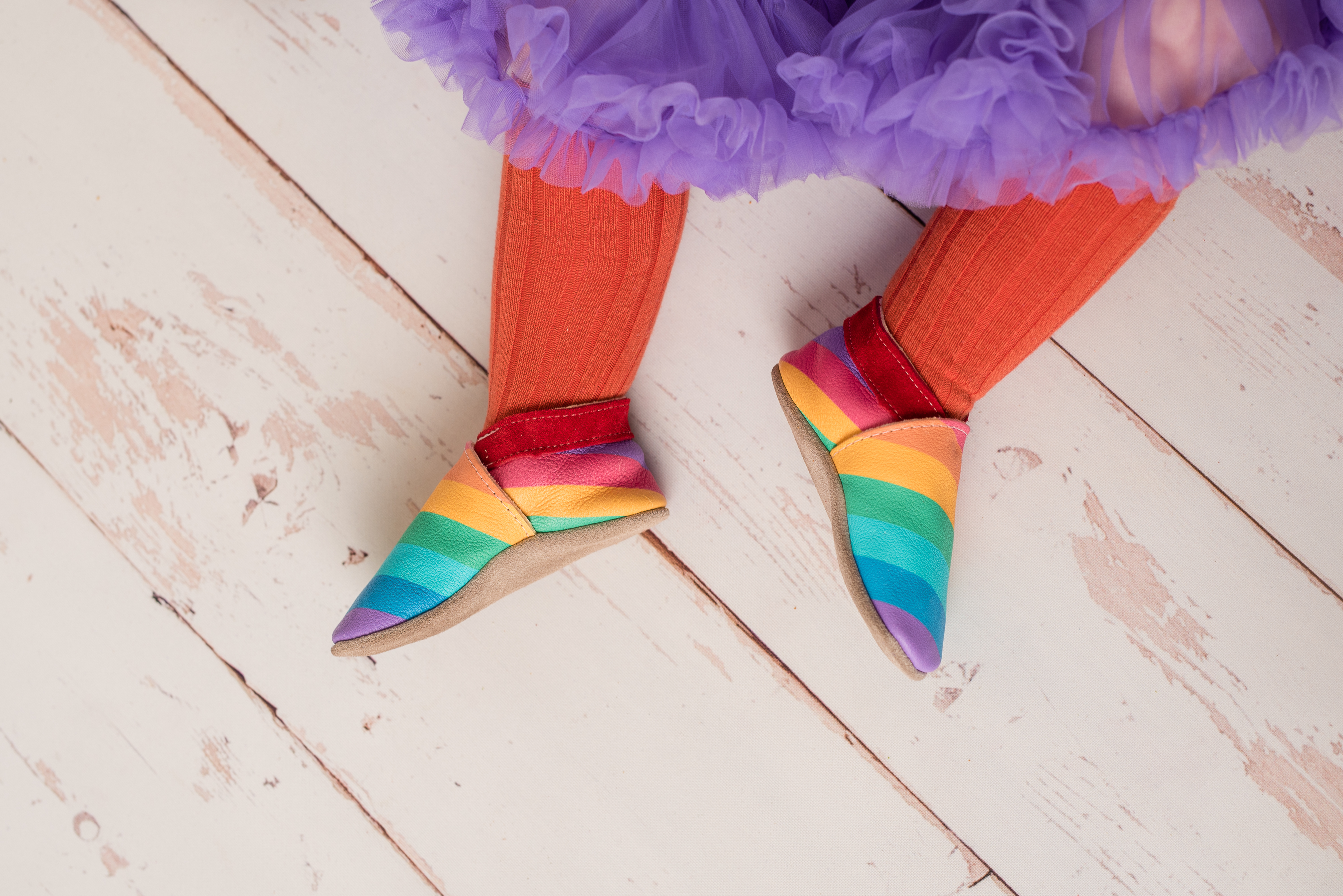When Can Babies See Colour?

Understanding when babies can see colour is a fascinating journey into the early stages of visual development. As parents, we can sometimes wonder about the world through our baby’s eyes and when they start to perceive the vibrant hues around them. In this blog, we’ll explore the stages of a baby’s visual development, debunk common myths, and provide a developmental timeline for when babies can see colour.
Newborn vision
Newborns come into the world with a limited ability to see. Their vision is blurry, and they mostly perceive the world in shades of grey. This is because the cells in their eyes responsible for detecting colour, called cones, are not fully developed at birth.
Blurry vision: Newborns can only focus on objects 8 to 12 inches away from their faces. Anything beyond this range appears blurry to them.
The visual system of a newborn is designed to gradually adapt to the outside world. The development of the eyes and brain is a complex process that continues after birth. During the first few weeks of life, babies’ focus is primarily on large shapes and high-contrast patterns. This is why black and white toys and nursery decorations are often recommended for newborns—they provide strong visual stimuli that are easier for the baby to see and process.
Common myths
Do babies see in black and white? Lots of people think small babies only see in black and white, but although newborns primarily see in shades of grey, they do start to differentiate between basic colours, especially reds and greens, within the first couple of months. This early colour perception is essential for stimulating their developing brain and helping them understand their environment.
Babies do, however, have a natural preference for high-contrast patterns. These patterns are easier for them to see and provide essential visual stimulation that helps develop their visual cortex. It’s therefore true that high-contrast colours like black and white are particularly effective in capturing a baby’s attention. This is why many baby products, including Inch Blue’s range of black and white baby shoes, incorporate these high-contrast patterns to stimulate visual development. The sweet Starry Monochrome shoes are a supple leather style with black and white polka dot star appliqué, perfect for capturing the newborn gaze.
Developmental timeline
Knowing when babies can see colour involves a detailed understanding of the key stages of visual development. Here’s a timeline of how a baby’s colour vision develops over the first six months:
0-1 Month: Shades of grey
Vision is mostly in black, white, and shades of grey. Babies can focus on objects 8-12 inches away from their faces, which is roughly the distance to a caregiver's face during feeding. This limited focus is enough for babies to recognise their parents and begin bonding.
1-2 Months: Basic colours
As their visual system matures, babies start to see basic colours. Red and green are among the first colours they can distinguish because the cones in their eyes that detect these colours develop first. At this point, our Apple Cheeks Cream supple leather shoes would offer a perfectly stimulating pattern.
2-4 Months: Vivid colours
Improvement in colour differentiation; start seeing more vivid colours. By this stage, babies’ ability to see and differentiate colours improves significantly. They begin to see the world in more vivid colours and can distinguish between a broader range of hues.
Enhanced ability to track moving objects: Babies develop the skill to track moving objects with their eyes, an essential milestone for hand-eye coordination. Colourful, moving toys are particularly effective at this stage for stimulating visual development and keeping the baby engaged. At Inch Blue, all our newborn shoes are either monochromatic or highly coloured so as to encourage the development of those powerful optic cones.
4-6 Months: Full spectrum
Colour vision is similar to adults'; babies can see the full spectrum of colours. By six months, a baby's colour vision is nearly as developed as an adult's. They can see the full spectrum of colours and recognise subtle differences between shades. They also begin to show preferences for certain shades.
The importance of colour in early development
Understanding when babies can see colour is not just about knowing when they start to see reds and greens. It’s also about recognising the broader impact of colour on their cognitive and emotional development.
Cognitive stimulation: Colourful environments stimulate brain development. Exposure to a variety of colours can enhance a baby's ability to learn and process new information. This is why nurseries and play areas often use vibrant, stimulating colours and it’s why here at Inch Blue we design newborn footwear that contains striking imagery and bold colours.
Emotional development: Colours can have a soothing effect on babies. Soft, pastel colours can create a calm environment, whilst brighter colours can excite and engage them. Understanding how babies perceive and react to different colours can help parents create a nurturing environment.
Practical tips for parents
Knowing when babies can see colour and how to support their visual development can be incredibly beneficial for parents. Here are some practical tips:
Use high-contrast items: During the first few months, provide your baby with high-contrast black and white items to help stimulate their vision. Inch Blue’s black and white baby shoes are an excellent choice for visual stimulation.
Introduce colour gradually: As your baby starts to see colours, introduce them to a variety of colourful toys and books. This will help them develop their colour vision and keep them engaged.
Create a colourful environment: Decorate your baby’s nursery or bedroom with a mix of soothing pastels and vibrant colours. This balance will help stimulate their vision while also providing a calming space.
Encourage exploration: Allow your baby to explore their environment. Place colourful objects within their reach to encourage interaction and visual engagement.
Ensuring that your child’s visual and physical development is supported with appropriate stimuli and quality products, you can help them navigate their early years with confidence and joy. When can babies see colour? With the right support, they can begin to enjoy the beautiful, colourful world around them much sooner than you might think.
Inch Blue shoes
As your baby experiences many milestones in their first year, including learning to walk, it’s important to provide them with supportive and comfortable footwear. Inch Blue shoes are designed to support those first steps with high-quality materials and thoughtful designs that cater to the developmental needs of growing babies. From the early days of high-contrast black and white patterns to more colourful designs, Inch Blue shoes are perfect for every stage of your baby’s journey.
But toddler shoes must not be forgotten, either. Here at Inch Blue, we offer a fabulous range of themed, highly coloured, supple leather shoes, so whether your little one is a dinosaur devotee or a farmyard fan, they can enjoy our baby dinosaur shoes and farm animal baby shoes.
